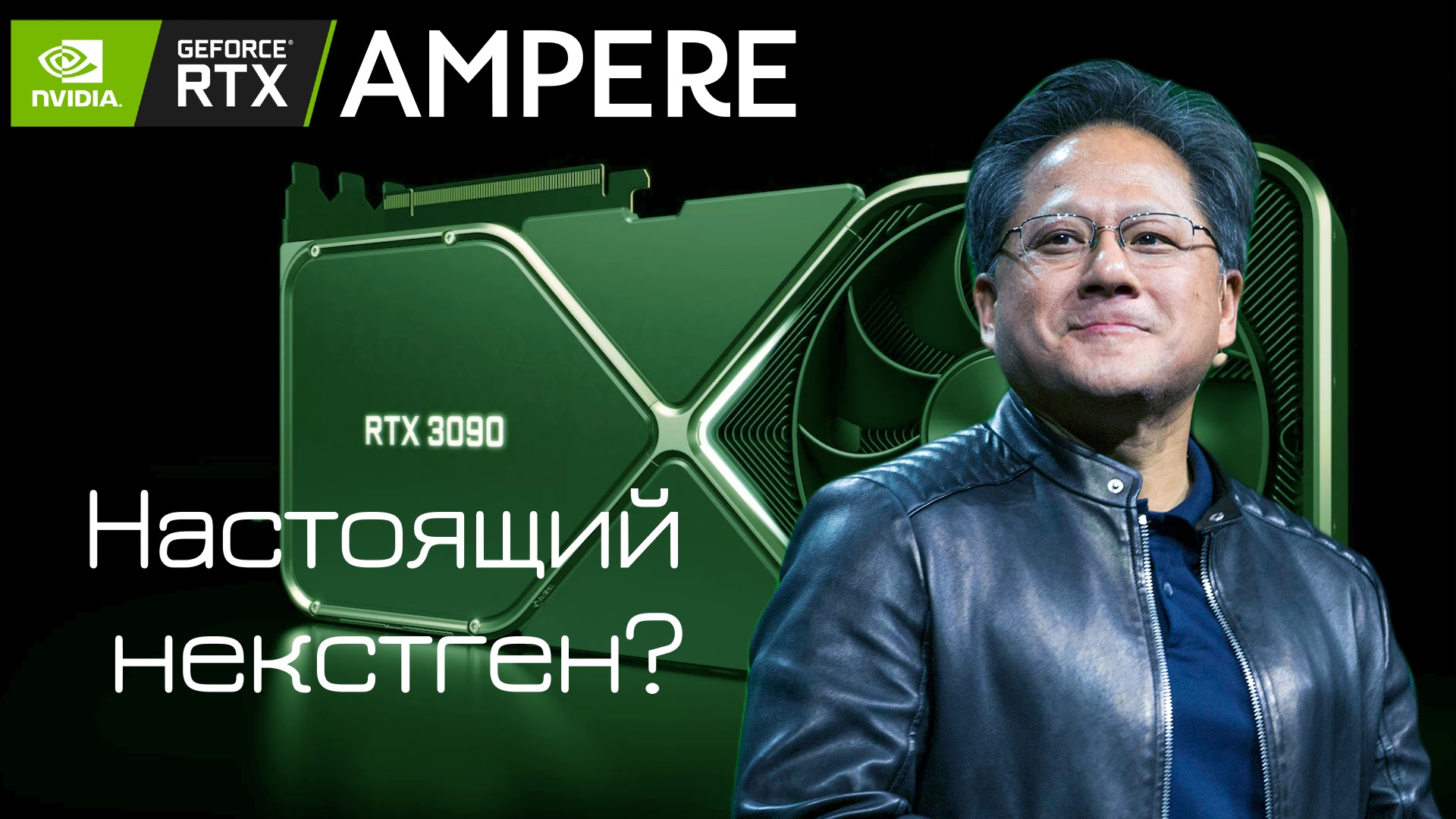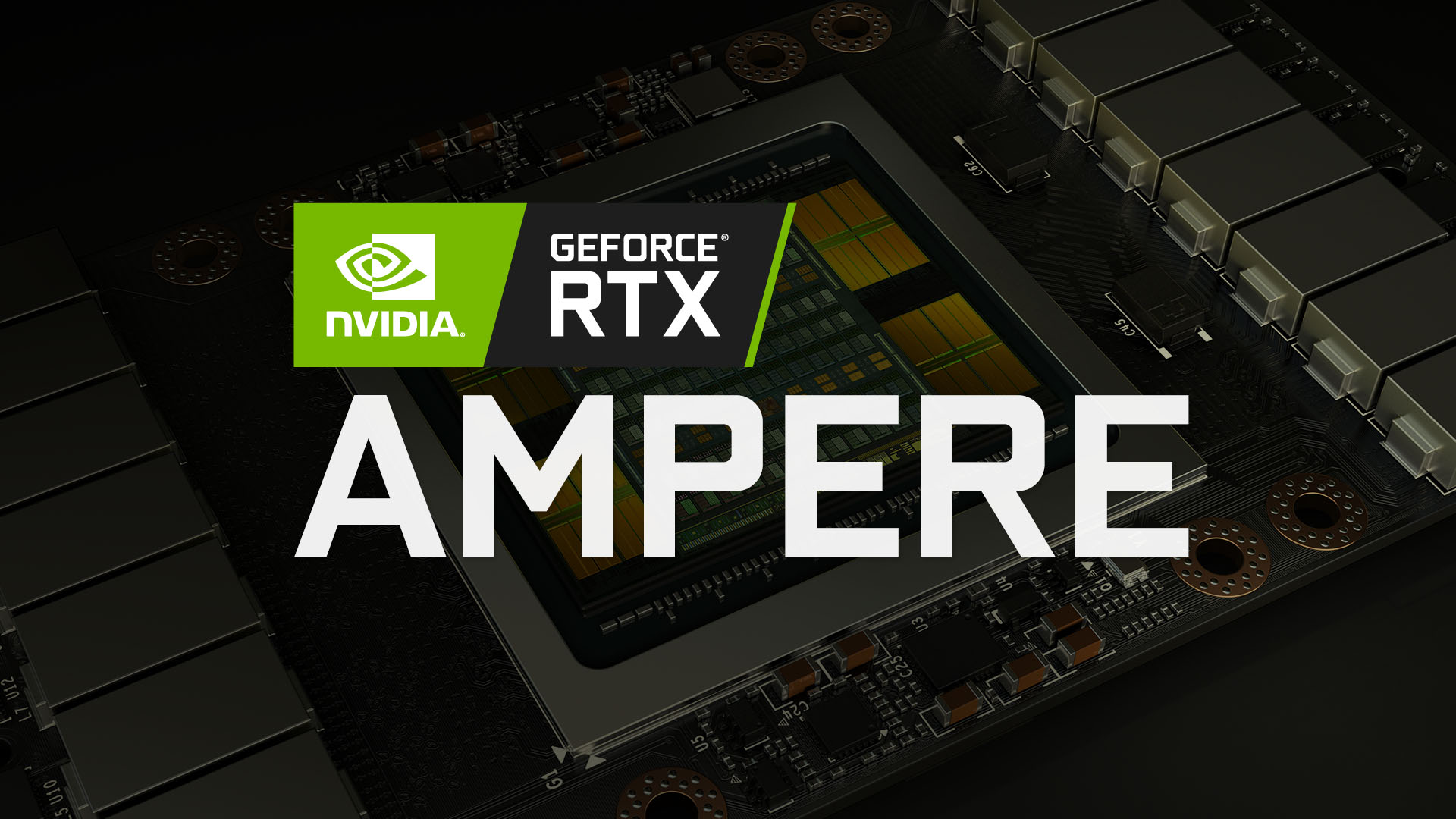
Rumors about Ampere have been around since the beginning of the year, but for the most part they have not boded well for Green fans. NVidia's long-standing partnership with TSMC, the market leader in the most advanced silicon wafers, has come under threat after AMD's hit success. The red giant took over a record volume of future 7-nm wafers for the future, leaving Jensen Huang only a fraction of the required volumes. Negotiations between the companies lasted a long time, but no agreement was reached. Leaving an old partner with the chip production for the Quadro series cards, nVidia turned to the only available alternative - the Korean Samsung.
As a result, the Ampere line was based on the chips produced according to the Samsung 8nm process technology - not very energy efficient and inferior to TSMC products, but incomparably cheap, and therefore extremely profitable nVidia. However, the production problems of Korean factories were known far beyond the market, and therefore Big Navi once again seemed much more interesting.
Let's move on to the event itself. Note that “21 days. 21 Years ”could be perceived as a bold attempt to change the paradigm in the names - Jensen scoffed at the fans to relish leaks a lot during the Turing era, but the RTX 2180 still didn't happen. The broadcast was opened by a beautiful video with key graphics achievements, the report of which began with the GeForce 256 and ended with the latest cards of the Turing family. With a smile and obvious pleasure, Jen-Hsun Huang talked about ray tracing, tensor kernels based on advanced AI algorithms, and even that traditional rasterization is about to reach a ceiling, after which other technologies will enter the scene. Obviously, this is about RTX - getting to the point, Jen-Hsun Huang presented the key advantages of Ampere.

RTX 2.0 - 2x the performance
A key feature of the Turing generation was the emergence of RTX technology - real-time ray tracing. For some time, Nvidia's cinematic presentations captivated everyone with the beauty of reflections, but it soon became clear that the power of RT cores was not enough for a comfortable game with new buns. On the example of the recent demonstration of Cyberpunk 2077, where RTX miracles await us, the Turing generation will again be out of work - the 2080Ti does not provide even 60 frames per second in the future novelty in Full HD resolution, let alone 4K. It remains only to sympathize with those who recently managed to splurge on the cards of the outgoing generation.
Ampere is a completely different story. "Next Generation RTX" promises to address the poor performance of ray tracing that will make old problems disappear. No more 40 frames in Control with RTX ON - and all thanks to the serious growth of all system components (tensor cores, SM-blocks and RT-cores). Jen-Hsun Huang promises gamers a gain of at least 80%, but in some games you can easily see a two-fold increase in performance compared to RTX in Turing.
In practice, a two-fold increase in the performance of the RTX 3080 against the background of the RTX 2080 was demonstrated by the Digital Foundry specialists, whose very independent hands-on came out almost immediately after Huang's presentation.
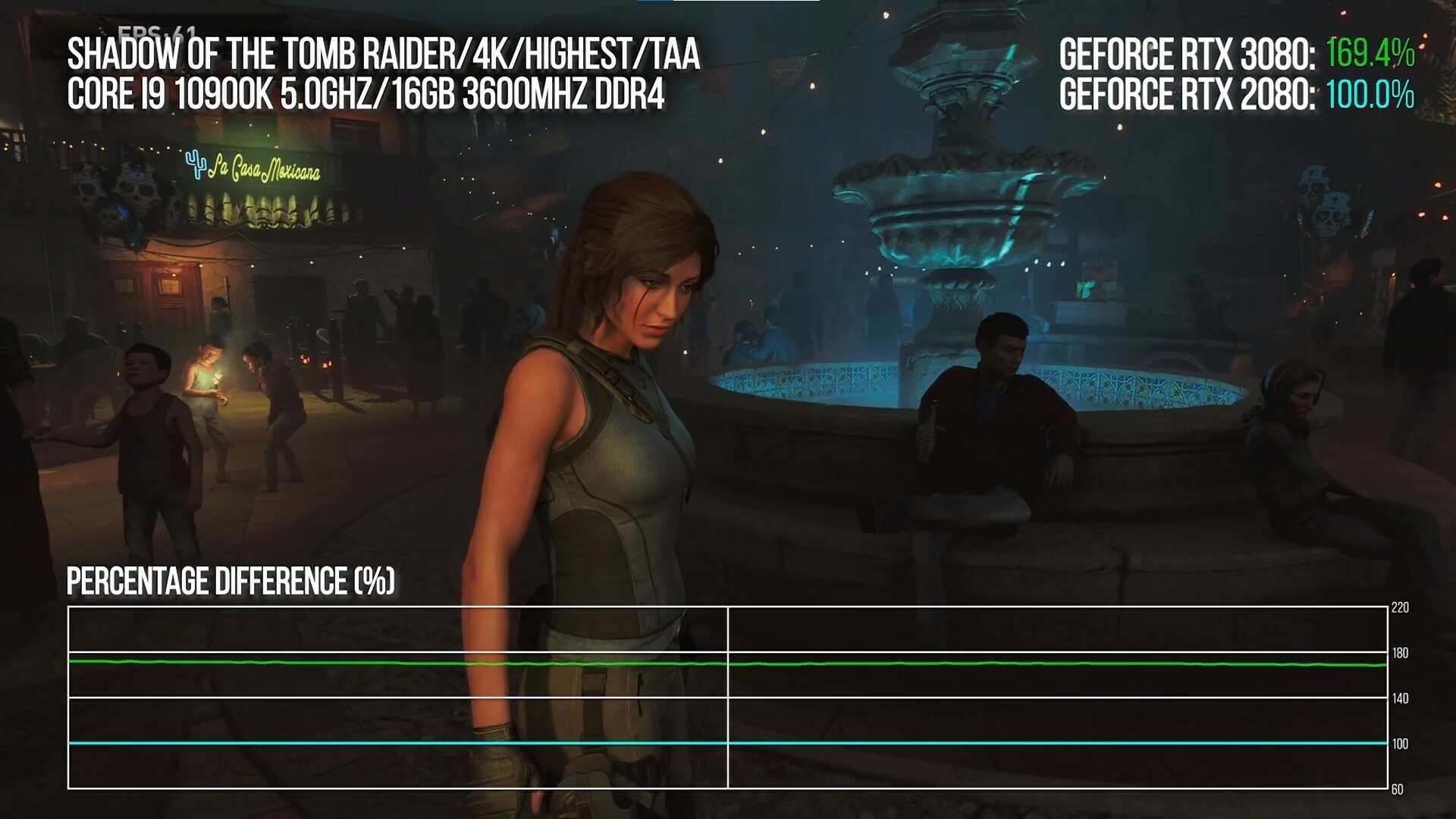
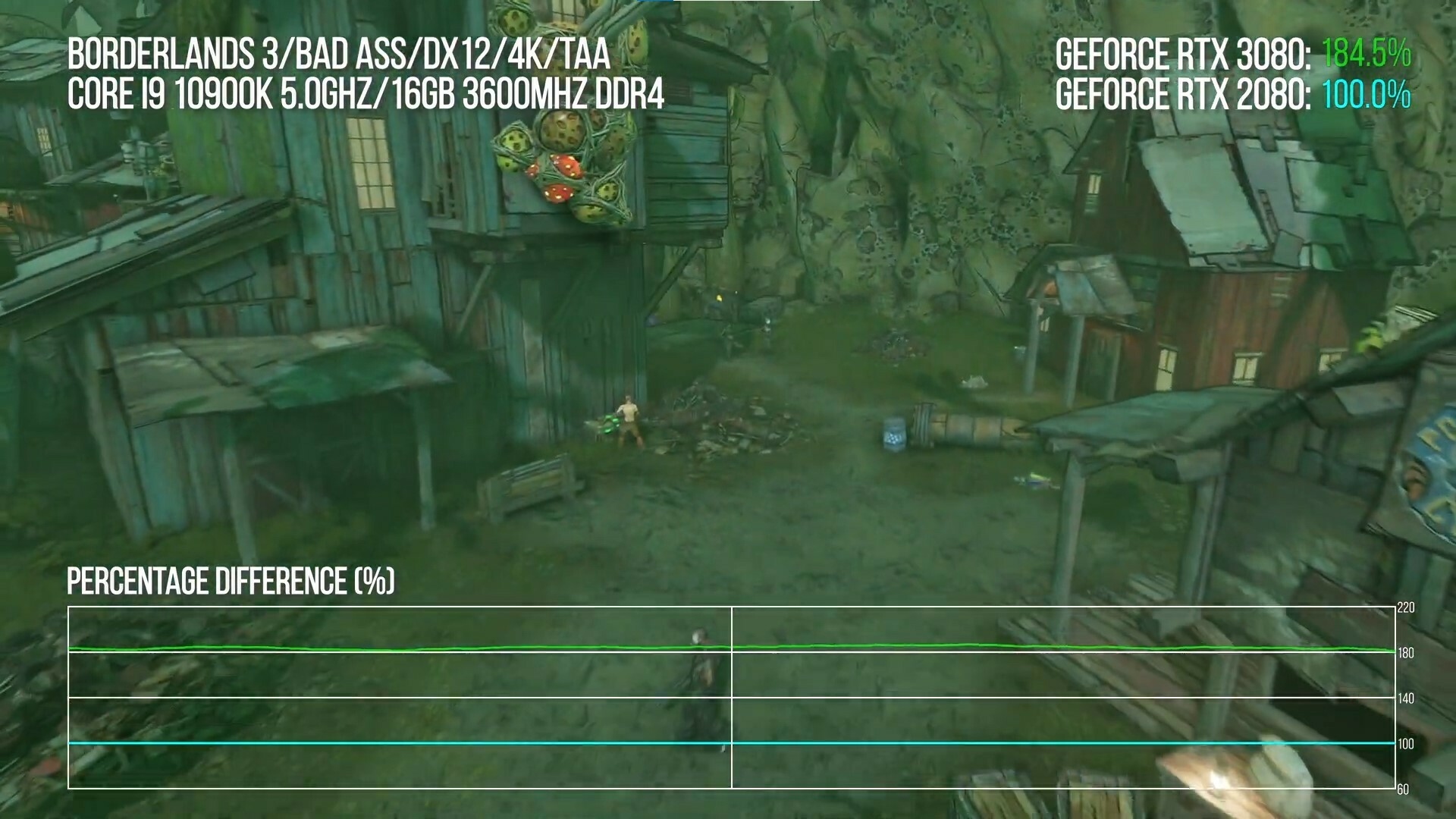
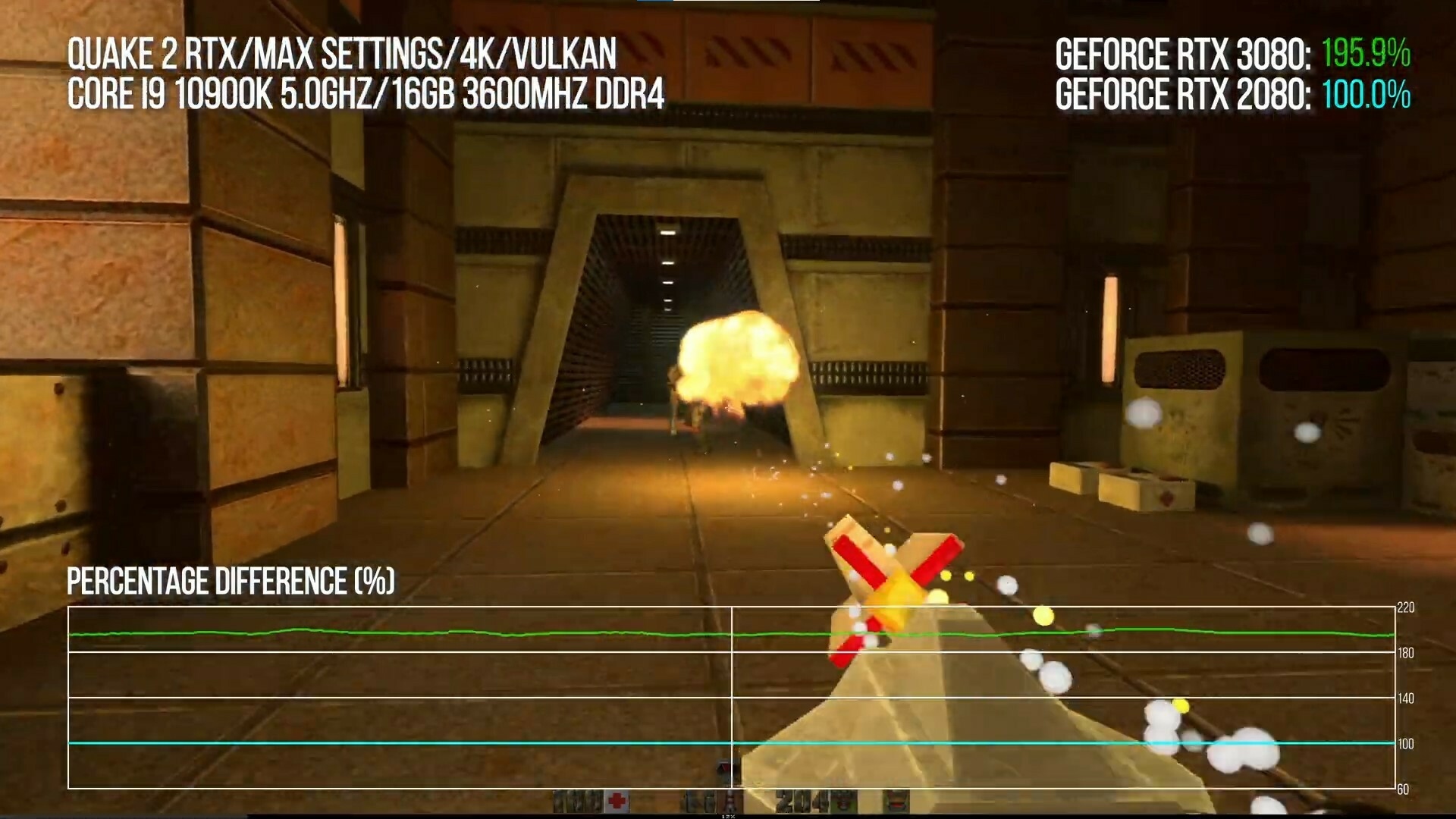
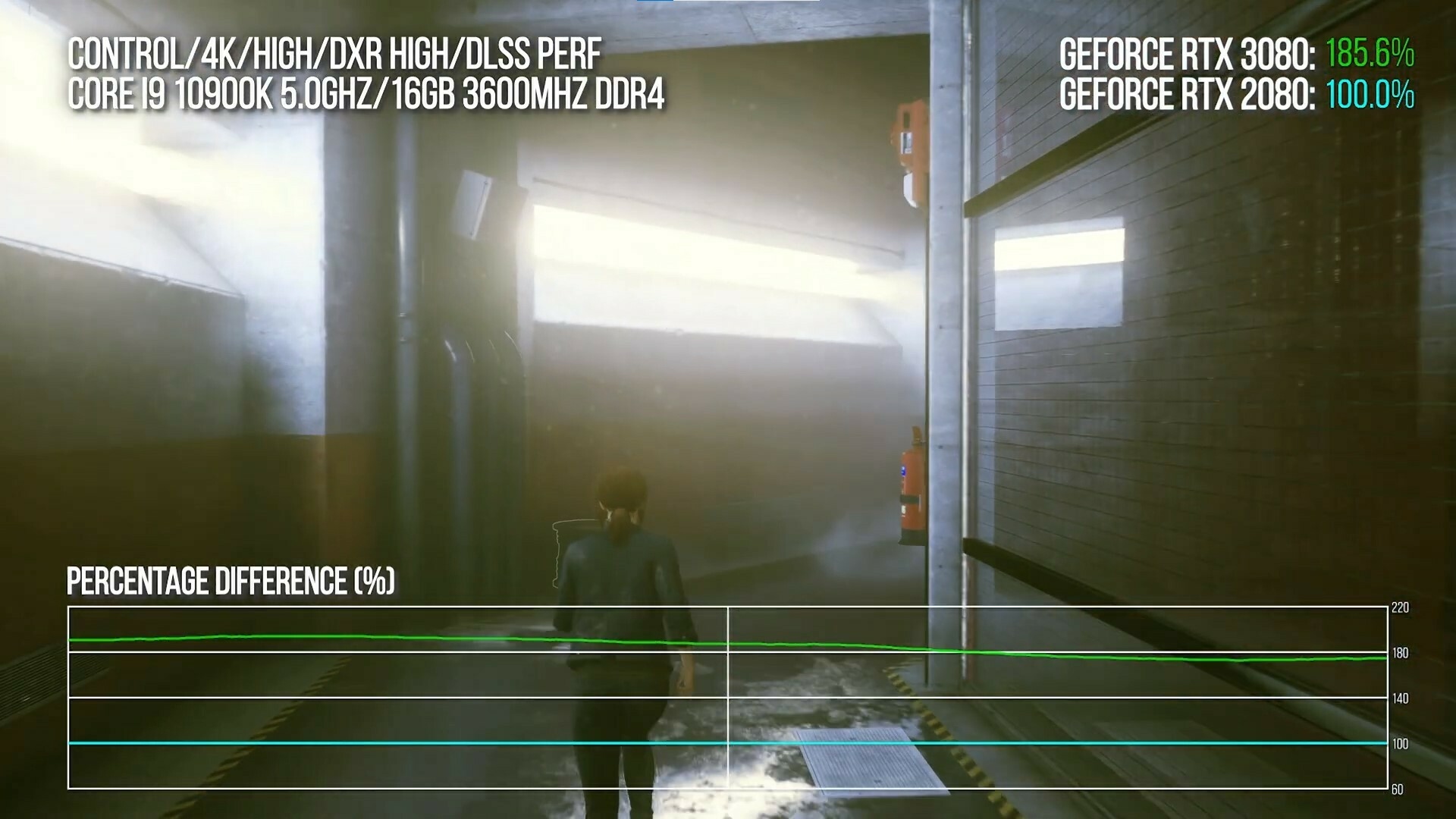
And at first glance this is a serious achievement, but is it serious? First, the presentation hid the most important thing from viewers - the number of FPS, limiting itself to a percentage. Secondly, consoles with their own RTX will soon enter the market - and their red "rays" may not be much worse than the green rays of Ampere. Of course, such a disaster as Turing, nVidia simply could not afford before the release of new platforms from Sony and Microsoft. Again, we do not envy those who bought the 2080Ti in the hope of a brighter future.
RTX I / O - Catch up and overtake PlayStation 5 chips
Remember how Mark Cerny, the lead architect for the PS5, emphasized the benefits of a perfect console system at every opportunity that works with data times faster than the average modern PC? Forget it - now you can only laugh at such statements.
For a worthy response to the magicians from Sony, NVidia presented the RTX I / O technology - a kind of approach to data processing, tailored for future releases. Jensen rightly noted that modern AAA hits (and other iconic projects) are becoming more and more voluminous every year, and it is simply impossible to load the same 200 GB of textures from the hard drive. Even modern SSDs have a hard time handling such massive amounts of data, and this is where nVidia's clever technology comes to the rescue.
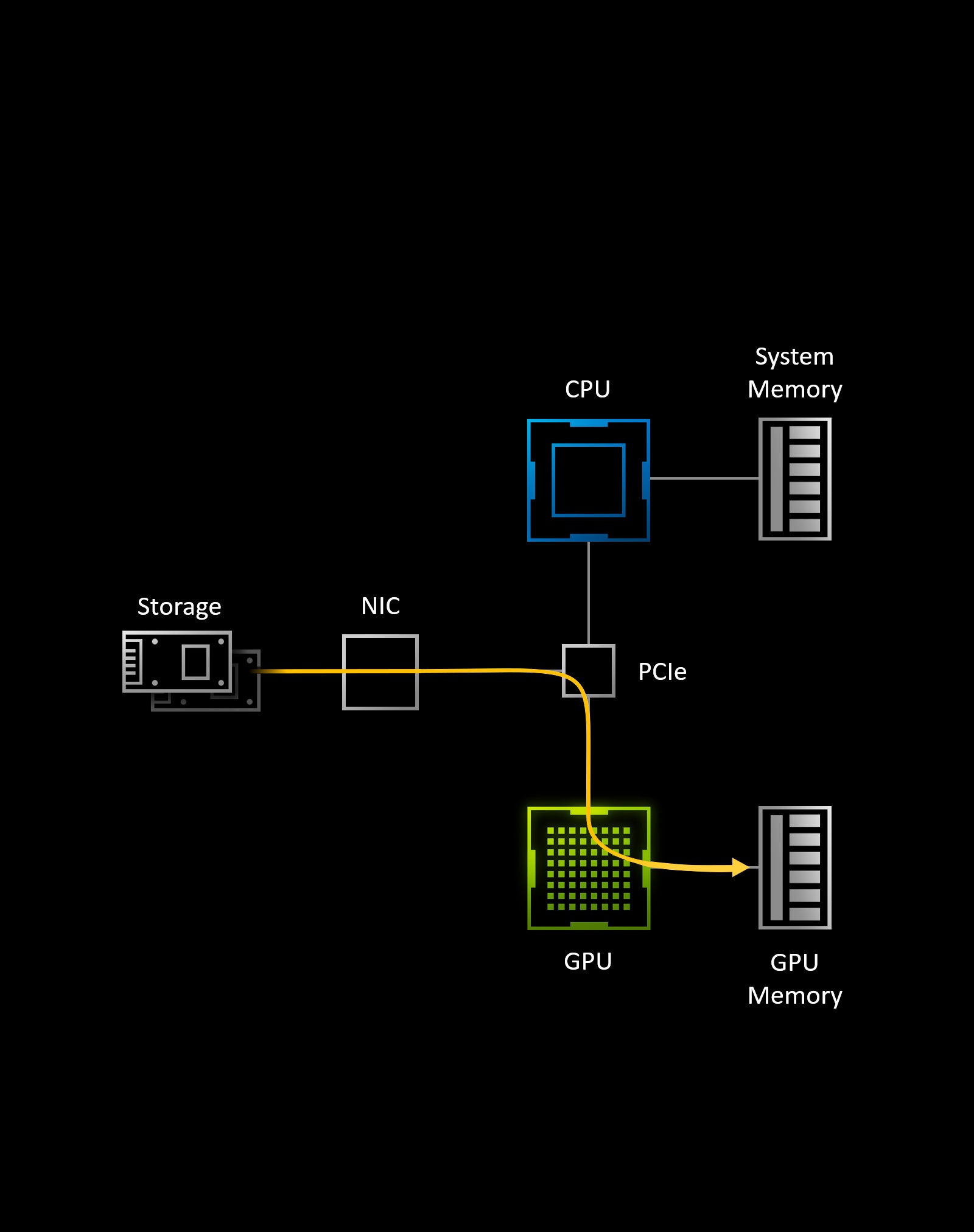
During the presentation, Jen-Hsun Huang demonstrated the advantages of RTX I / O in one simple scheme - according to her, data from the drive is cached directly into the video memory of the Ampere card, bypassing the processor and memory subsystem. At the same time, Huang called the main disadvantage of the traditional approach not a narrow bus, but a high load on the CPU. So, the latest generation NVME drives are capable of loading as many as 24 streams, which will not go unnoticed in difficult gaming scenarios. Basically, the PS5 will implement a similar system, but nVidia offers its benefits in a more simplified format.
NVidia software innovations - Reflex, Broadcast, Omniverse Machinima
Along with beautiful graphics, Jen-Hsun Huang spoke about new software technologies designed to make the purchase of Ampere even more profitable. For example, esports athletes will appreciate the benefits of nVidia Reflex, which negates most of the latency of PC components at the driver level - usually this value is 30ms, but with Reflex it can be reduced by more than half. To confidently dominate the enemy, Huang recommended using the technology in tandem with a brand new monitor. These, with a refresh rate of 360 Hz, should hit the market in the coming months.
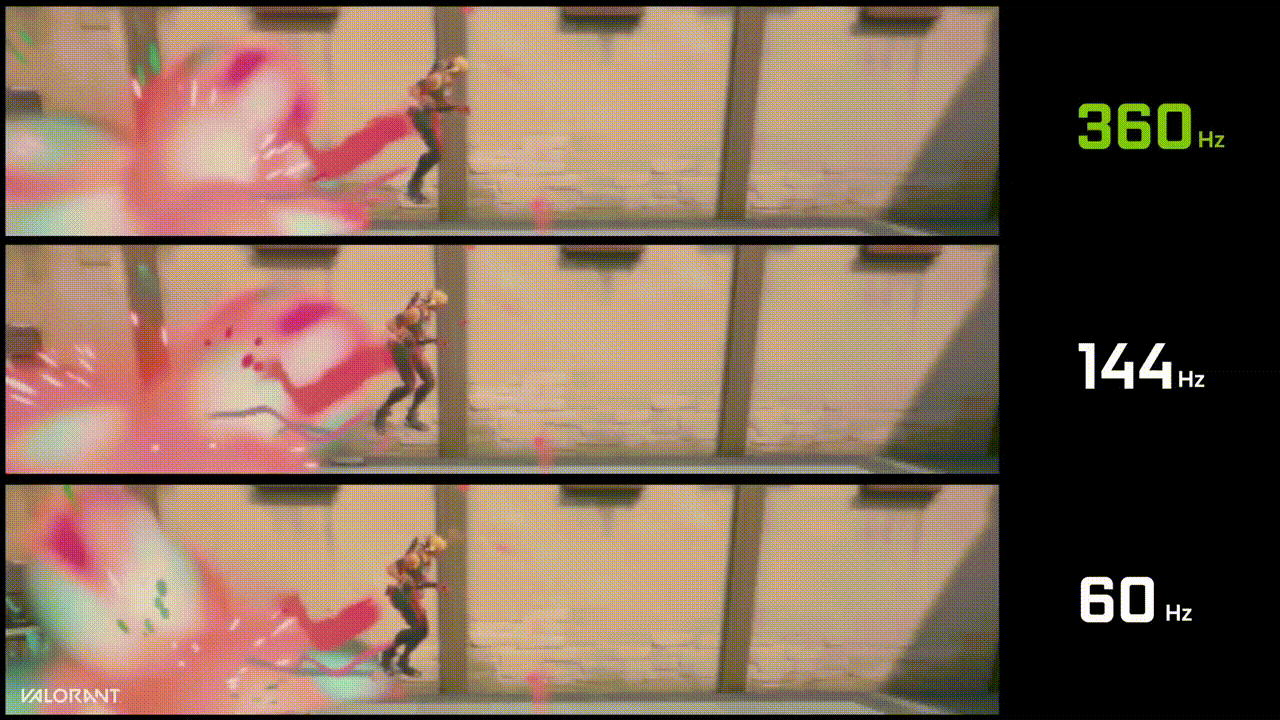
NVidia Broadcast is a great tool for streamers, podcast hosts, and other creative people who take to YouTube or Twitch. With its help, you can remove extraneous noise by localizing sound sources, blur, replace or completely remove the background from the webcam in just two clicks. All this became possible thanks to the emergence of advanced algorithms based on machine learning.
NVidia did not forget about the developers - they were presented with a unique toolkit for creating spectacular videos and presentations, as well as working with assets. It was named Omniverse Machinima - in honor of those very legendary machinimas from the past. As part of the announcement, an example of Omniverse's work was Mount & Blade 2: Bannerlord, on the basis of which assets were created in just a few days a cinematic video with a fully animated character. With the help of Omniverse, it will be possible to simulate facial expressions and animation of a hero's mouth based on the voice of a voice actor, build general animations of models, and much more. This interesting set of tools will be available for general testing in October. Perhaps a new golden age of machinim is looming on the horizon.
Only one question remains - where is the new graphical driver shell for owners of nVidia video cards? Why is Radeon Adrenalin still more advanced and advanced, and Jensen is in no hurry to step into the 21st century? Unfortunately, we still do not know the answer to these questions. Now let's talk about the changes.
RTX 3000 positioning. Simplified names, low prices
The Ampere generation marks the first time in many years that NVidia has moved away from the Ti-indexed flagship tradition. There were several reasons for this unexpected decision. The most significant of them was a serious confusion in the model range, which is why endless Ti, SUPER and models with different memory configurations spoiled the mood of people who came to the store for a video card. Keeping track of which card is faster and why was tricky - and that's why nVidia lent a helping hand to create the simplest, most intuitive RTX 3000 line.
The flagship role this time was played by the classic "second" card of the line - RTX 3080. With 10 GB of superfast GDDR6X memory and as many as 8704 CUDA cores (which is twice more than 2080Ti), the novelty is ready to move mountains - and the declared two-fold performance of the 2080 makes a serious claim for leadership ... But the audience of the announcement was shocked not even by this, but by the price ... only $ 699!

And no, this is not a mistake - Jensen himself admitted that Turing could not persuade the owners of the brilliant Pascal graphics cards to upgrade, but Ampere is able to pleasantly surprise, and do it inexpensively. And it's not just the RTX 3080.
The same RTX 3070, the junior model from the launch line, for only $ 499 offers performance above the 2080Ti! Yes, it has only 8 GB of regular GDDR6 video memory on board, but this does not detract too much from the obvious advantages. All the power of the last generation flagship for 40% of the price?
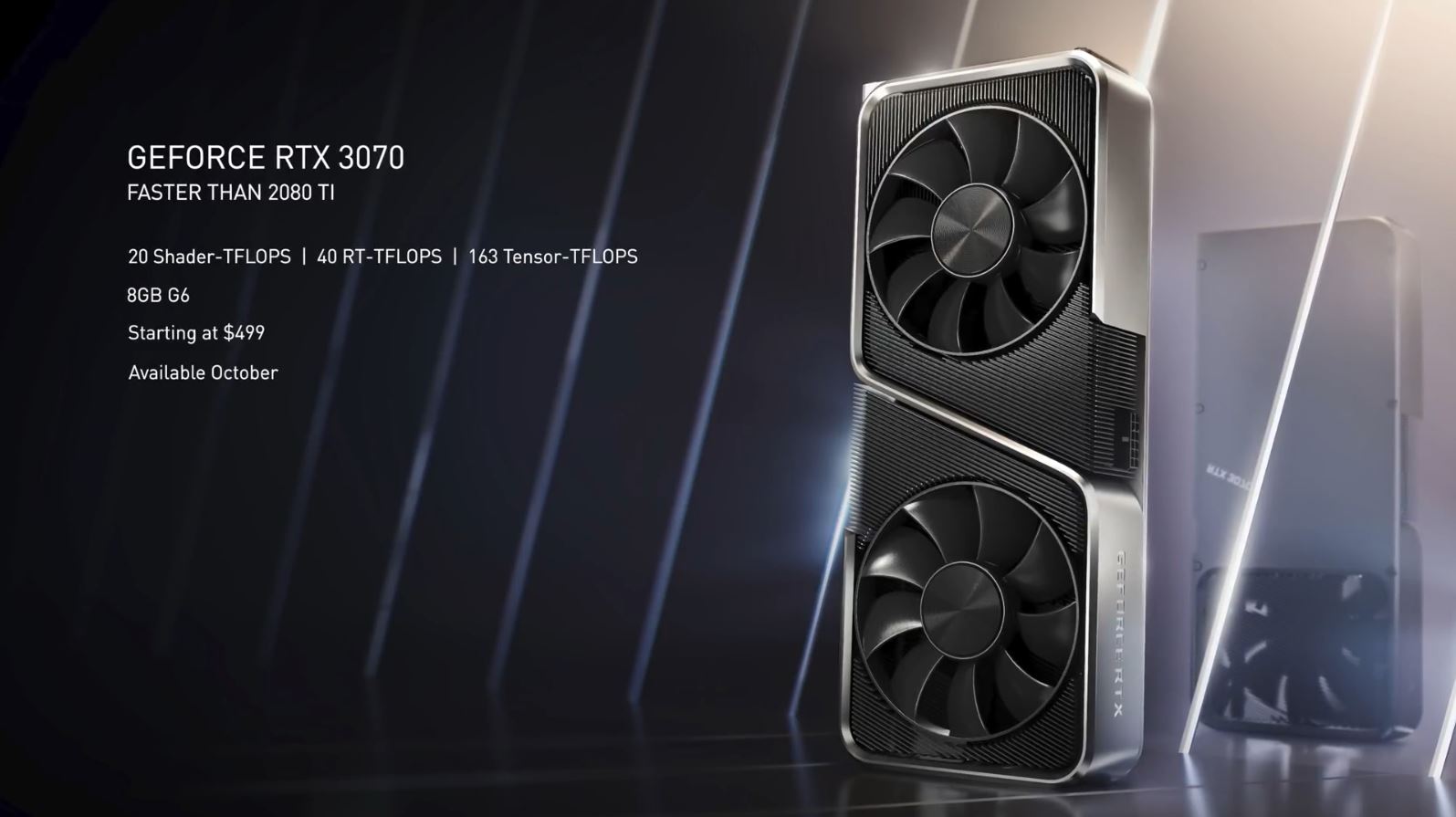
But that's not all. Having abandoned the Titan brand, nVidia introduced a graphics card for those who are interested not only in playing, but also doing content "to the next level." The RTX 3090, which even Jensen struggled to pull out of the oven, carries 24GB of GDDR6X memory on board, and invites you to forget about any compromises.
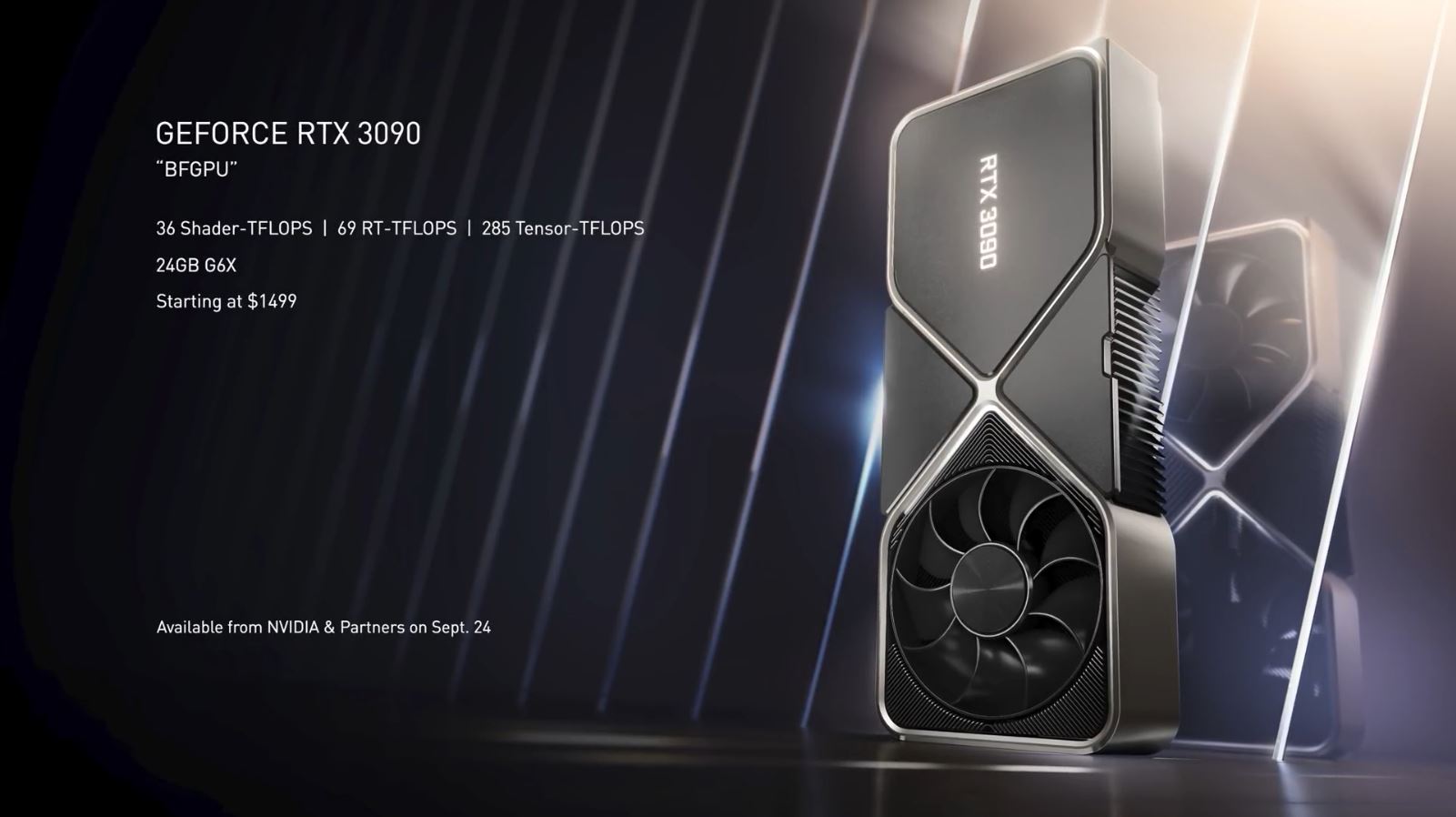
At the presentation of nVidia, for a hint of the power of the new product, they even showed some people playing in 8K resolution with 60 FPS. And these people were seriously impressed! No questions, 3090 - for serious people. And the owners of 8K TVs.
And yet, the presentation was not only light and beautiful. As soon as he took off his green glasses and looked away from the portrait of Jensen Huang on the table, questions arose by themselves. And now we will analyze everything that remains behind the scenes of the announcement of Ampere.
What were you silent about at the Ampere presentation? Pre-order pitfalls
Any announcement should always be taken with a healthy dose of skepticism. Remember the Turing presentation, where Jensen's words It just works and some beautiful demos made people hoarse to prove to each other that RTX is the future. And if in this they were not completely mistaken, then many made a mistake with the purchase of Turing generation cards. There were no games with RTX support in the declared amount, and those that did receive support for the promising technology worked very badly - the owners of flagship video cards continued to play with RTX off, hoping for the future. And now it has come - and after the announcement of Ampere, the once happy owners of 2080 SUPER or 2080Ti in a hurry sell their cards on Ebay for $ 400 - the release is getting closer, and soon the former "flagships" will turn into a pumpkin, depreciating significantly.
But what about the graphics? Jen-Hsun Huang is a God-given salesperson, a presentation master and a soulful man who wants to believe with all his heart. But alas, this time the beautiful values did not show us the most important thing, namely, the FPS values (which were demonstrated later on other channels and only in certain scenarios and games). Whether it's multipliers (as in the case of RT performance) or percentages (as in the case of the demo from Digital Foundry) - all this does not show us pure performance in any way, and is simply misleading. Not to mention, many of the numbers were obtained using DLSS 2.0, an excellent upscaling technology that works wonders for performance and image ... but only where supported.A striking example (shown in the presentation) was the recent PC release of Death Stranding - Kojima perfectly implemented the technology in his project, but again, not every developer is capable of this, and this does not show the big picture. How much more cheerful is the 3080 than the same 2080 without RTX and DLSS? Only Jensen Huang himself knows the answer to this question - but he won't tell you, otherwise you may not have pre-ordered 3080 yet.
The power consumption of new products was also mentioned only in passing. Quite creepy figures of 90% performance per watt could give viewers the impression that we are facing monsters, and even not too gluttonous, but this is not so. Of the three cards, only the RTX 3070 (with a TDP of 220 W) is moderate - its toy cooling system can be immediately noticed against the background of the two older models. And there is an experimental system, innovative design, impressive dimensions, and TDP, the values of which can go beyond 400 watts (in overclocked partner models). Such figures are seriously depressing, but they say only one of two things - either Samsung's technical process is still very crude, or NVIDIA squeezed everything out of its chips, fearing either consoles or the mysterious Big Navi. Anyway, if your interest is focused on 3080 or 3090,Take care of purchasing an expensive, well-proven, at least 650W PSU. KSAC do not buy!
Finally, there remains the issue of accessibility. New graphics cards may linger in all markets outside of the US. The case of 2080Ti, which got to some happy pre-orders for three months after the release, hints that this time the picture will be at least similar, and some retailers, feeling the thirst for profit, will offer new items at such prices that even Jensen Huang himself is crazy ... Alas, the current situation in the world only contributes to all kinds of excesses.
In addition, no one can say what the partner margins for the Ampere cards will be like. While the cheapest 2080Ti could be bought for a little over $ 1,000, the best models were selling for $ 1,200 and even more. Thousand bucks for 3080? It is possible, therefore, we recommend that you wait out the release storm and buy a video card a little later - at a more pleasant price. Ampere sales will start very soon. The $ 800 RTX 3080 will hit stores on September 17th, the $ 1,500 RTX 3090 will start shipping on September 24th, and the $ 500 delicious RTX 3070 will hit stores in October.

Conclusions. Ampere is cool!
What is the bottom line? Jen-Hsun Huang started broadcasting from the kitchen and amazed the whole world in a way that no one expected. The new generation is not only significantly cheaper than the previous one, but also promises "the steepest leap in performance in a generation in history," as stated by nVidia itself. The fans cheer, the haters hate, and we'll praise Jensen for another great announcement - it was a pleasure to watch the stream. And you, friends, we advise you not to turn off your head and not to make hasty decisions. Wait for independent tests, do not believe in loud statements in advance.
Our video on the Announcement of nVidia Ampere: Article by Alexander Lis.
